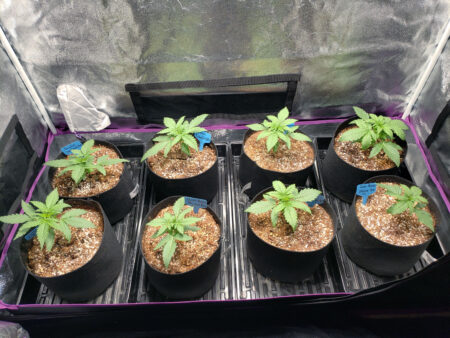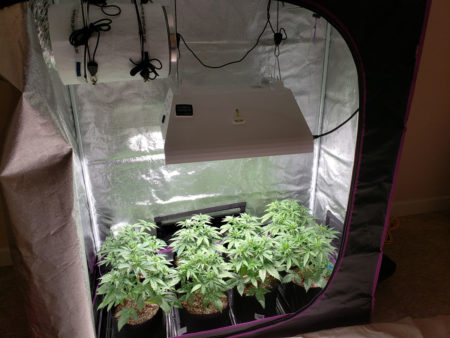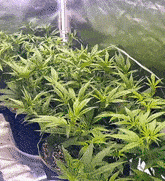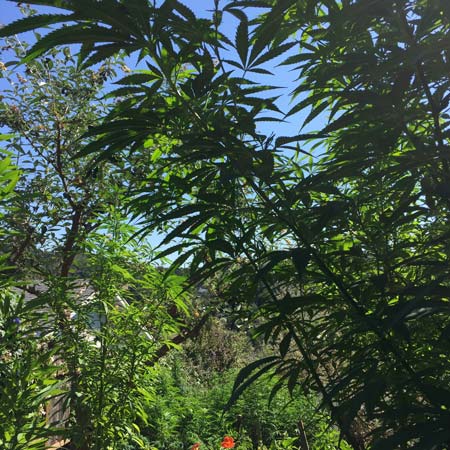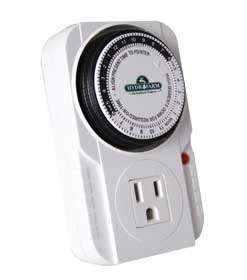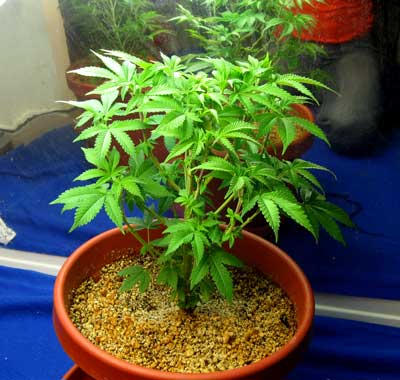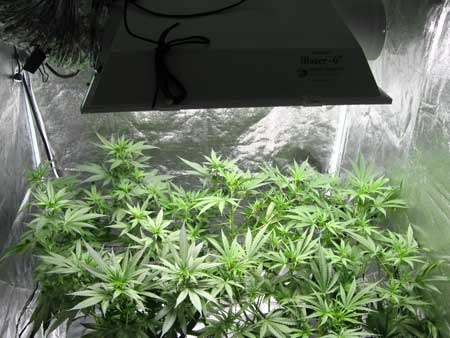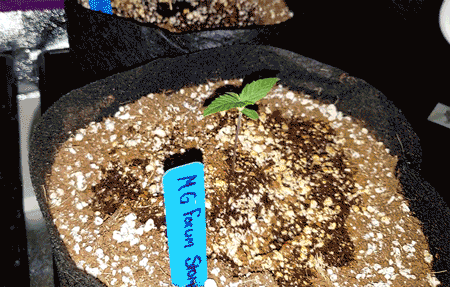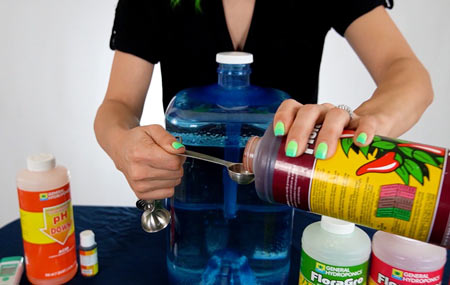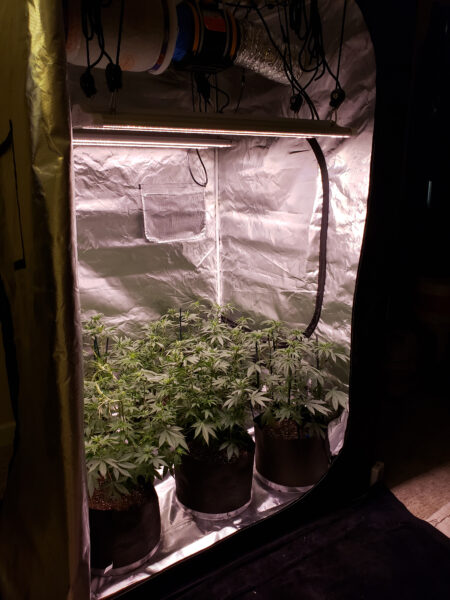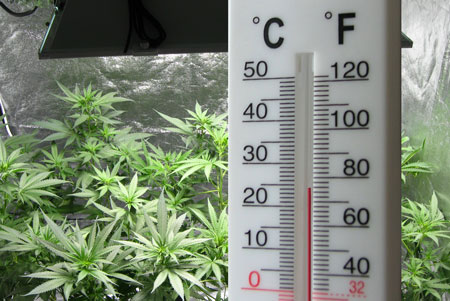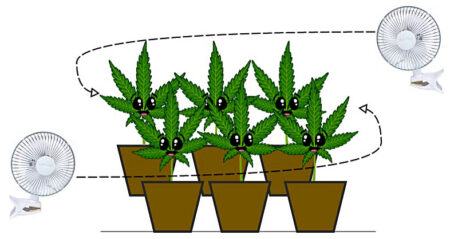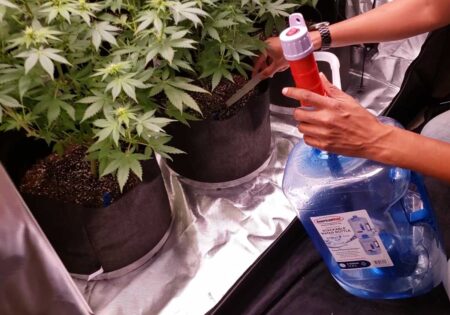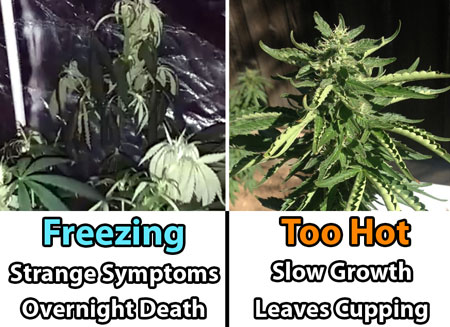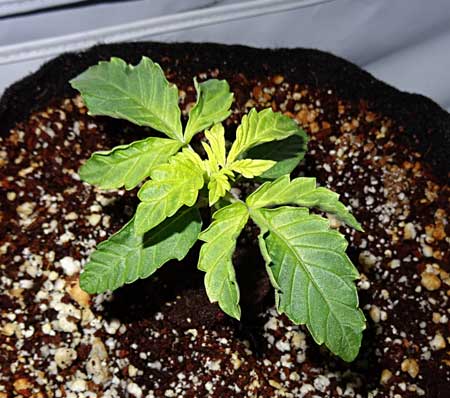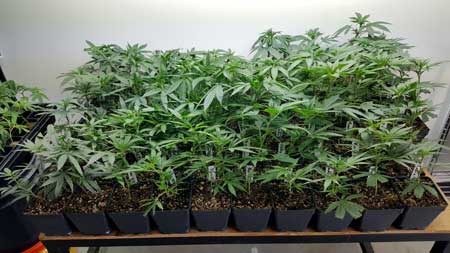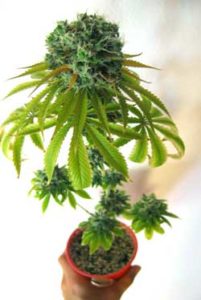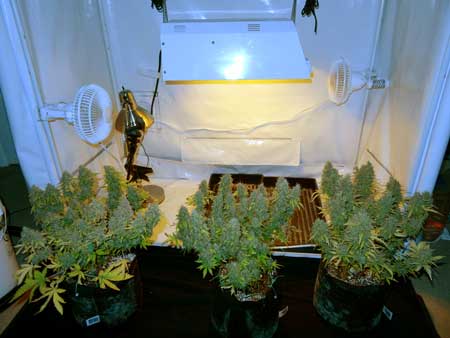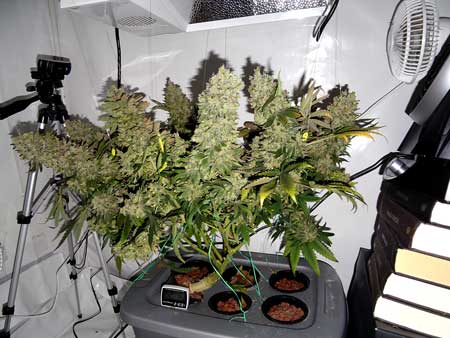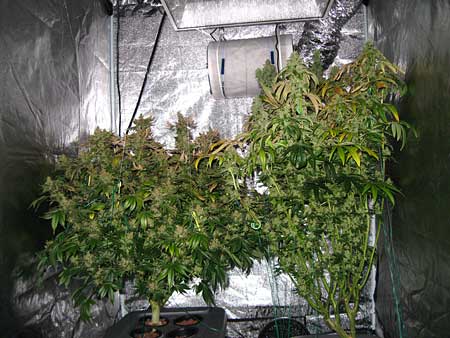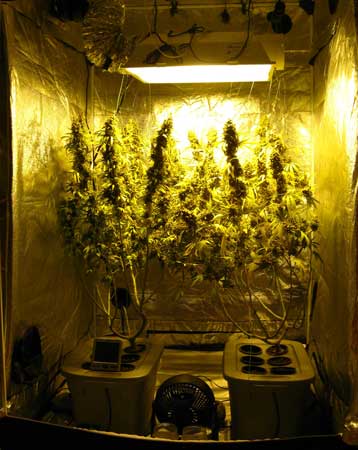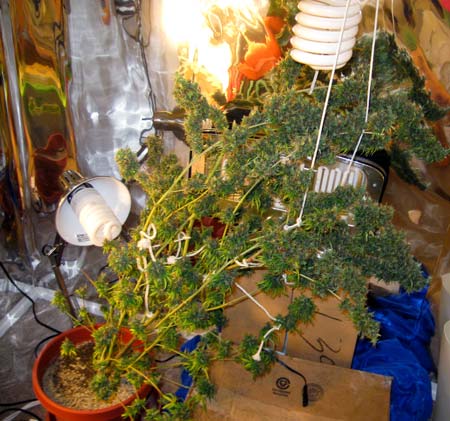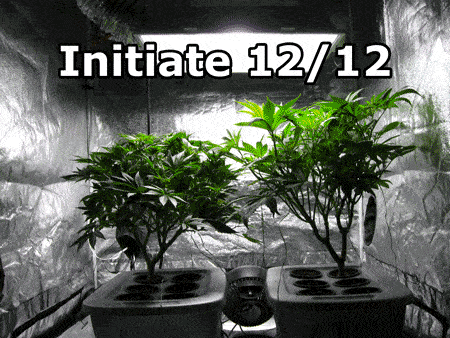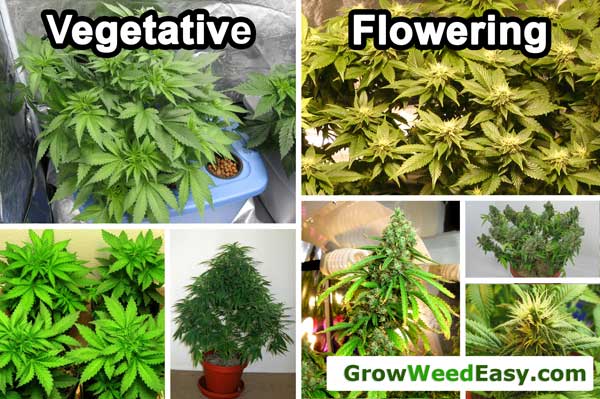by Nebula Haze
A cannabis plant’s life begins in the vegetative stage, which is a period of growth where it focuses on getting big and strong. During this time, a weed plant will only grow stems and leaves – no buds yet! It’s an essential step in the life of a cannabis plant, setting the foundation for the rest of its life.
These happy green cannabis seedlings are in the vegetative stage.
Here they are 10 days later. As you can see, they’re only growing stems and leaves (no buds yet).
Two Cannabis Life Stages
- Vegetative Stage – Cannabis plants grow only stems and leaves. This is what today’s vegetative stage tutorial is all about.
- Flowering Stage – Cannabis plants grow flowers (buds). Learn about cannabis plants in the flowering stage.
In the vegetative stage, cannabis plants can grow inches taller every day if you treat them right.
Indoor growers have the power to keep cannabis plants in the vegetative stage for as long or short as they want. All a grower needs to do is give plants 18+ hours of light a day and it will stay in the vegetative stage essentially forever. This is easily done by either leaving lights on 24 hours/day, or putting grow lights on a timer that turns the lights on and off for you on a 18/6 light schedule. Being able to shorten or extend the vegetative stage means that indoor growers have a lot of control over the final size and shape of their plant. Outdoor growers, on the other hand, are at the mercy of the sun’s natural light cycles.
The exception to the rule is auto-flowering strains, which automatically go from start to finish in about 3 months regardless of what light schedules they receive. Click here to learn more about autoflowering strains.
Having a light period that lasts 18+ hours each day will make cannabis think that it’s summer (grow time). As long as cannabis plants get 18+ hours of light a day, they will remain in the vegetative stage, growing only stems and leaves.
Vegetative Stage: 18+ hours of light a day tells a cannabis plant it’s time for growing leaves and stems!
Indoor growers usually provide either a 18-6 or 24-0 light schedule during the vegetative stage of cannabis. 18-6 means 18 hours of light and 6 hours of dark each day. 24-0 means 24 hours of light with no darkness each day.
Don’t forget the timer! Use a timer to automatically turn indoor grow lights on and off do you don’t have to do it manually every day. Cannabis plants prefer consistency. It’s a lot harder for a person to turn the lights on an off at the same time every day as a timer.
Plug a timer into a wall and plug your grow light into the timer. This lets you automatically control when the light turns on and off every day.
18-6 vs 24-0 Light Schedule for Indoor Growing
Some cannabis growers keep their grow lights on 24 hours during the vegetative stage, while others put lights on a 18/6 schedule (or somewhere between).
What light schedule is best for the vegetative stage?
The answer depends on which grower you ask, and may even be different from plant to plant. Most weed strains are fine and will flourish when given 24 hours of light a day in the vegetative stage. Yet some strains may do better on 18/6.
Pros of 18/6 Light Schedule in the Vegetative Stage
- Lower electricity cost: If electricity cost is a concern, you may want to consider a 18/6 light schedule. This uses 20% less electricity (which helps keep electricity costs down) and does not having a huge effect on growth rates.
- Lower heat: For growers dealing with heat, and 18/6 schedule also allows growers to use the 6 hours of darkness to help cool the grow area. If your grow area gets too hot at certain times of the day, you could set your 6 hours of darkness to happen during that time, so lights aren’t running when it’s hot.
- More resistant to problems: While most plants will grow fine under 24 hours of light a day, they tend to be easier to stress out. Giving plants a little bit of a night period to recover every day makes them more hardy and less likely to run into problems like light burn.
Pros of 24/0 Light Schedule in the Vegetative Stage
- Best choice for cool grow space: If the temperature of the grow space regularly drops below 70°F (20°C), then 24 hours of lights a day might be the best choice because the grow lights help keep your plants warm.
- Slightly faster growth: If you take great care of your plants and keep them healthy, they will grow slightly faster with more light hours per day. However, the difference is not huge.
There will always be growers who feel that cannabis plants need some time with the light off (a dark period) in order to have optimal growth, while others believe that the extra hours of light are better since they give your plants slightly faster growth in the vegetative stage.
Auto-flowering strains of marijuana need 18-24 hours of light a day from seed to harvest. You sort of treat them like they’re in the vegetative stage for their whole life, and let them do their thing.
I typically keep my grow lights on an 18-6 schedule (18 hours of light, 6 hours of dark) for all my plants during the vegetative stage. I also use 18/6 for autoflowering strains from seed to harvest. It’s easy and my cannabis plants grow fast and healthy. I live in a hot climate with high electricity costs, so the 6 extra hours of lights-off is meaningful.
However, I have used 20, 22 or 24 hours of light a day for my cannabis plants, and they grew just fine. If you have your grow dialed in, the main difference is just that plants tend to grow faster. A full 24 hours of light/day certainly provides somewhat faster vegetative growth than an 18/6 schedule because plants are getting more light to make energy. It’s up to you to decide which light schedule is best for you. Anything between 18-24 hours per day works great.
On average, most indoor growers vegetate their plants for 4-8 weeks to ensure they get to a good size before they start making buds. Seedlings are able to start flowering as early as 3-4 weeks from germination, but the resulting plants will be small. Most growers choose to let plants vegetate for a month or two because this results in bigger plants, which tend to produce bigger yields (as long as you have enough light to cover all the bud sites). That being said, you can still produce quite a bit of bud with a lot of small cannabis plants growing at once as long as you fill up your grow space.
Daily Care in the Vegetative Stage
In the vegetative stage, your job is simple. Cannabis plants grow fast and are tough in the vegetative stage.
To keep your cannabis happy and healthy, you need to do the following
Provide water – Water plants when top inch of soil feels dry to the touch. In containers, make sure water can drain freely out the bottom. In a hydro setup, there will always be plenty of water. How to water plants.
Nutrients – if providing nutrients to your cannabis plants, start using the included nutrient schedule at ½ strength, and only raise to higher levels of nutrients if needed. Simply add the directed amount nutrients to your water before giving it to plants or adding to reservoir. Manage pH levels if using liquid nutrients.
Provide light – Use your vegetative grow light as directed. Simply turn grow lights on and keep at the recommended distance from the top of your cannabis plants. Outdoors plants will continue vegetating until days start growing short in late summary. Indoors cannabis plants will stay in the vegetative stage as long as they’re getting 18+ hours of light a day.
Not too cold, not too hot – Vegetative cannabis plants prefer a comfortable room temperature or slightly warmer. 70-85°F (20-30°C) is great. Avoid low humidity (below 40% RH) in the vegetative stage if possible. Never allow plants to experience freezing temperatures.
Air circulation – Make sure cannabis plants get a constant supply of fresh air so plants get the CO2 they need to grow, and keep air moving so there are no hot spots and leaves are always moving/rustling. In a smaller grow tent like a 2’x2′ or 2’x4′ size, you likely only need a single strong exhaust fan to get all the airflow you need. In a bigger grow tent like a 4’x4′, you will likely also need to add smaller fans within the grow space to help move the air around. Outdoors you may want to put up wind breaks if it gets too windy so plants aren’t being waved around.
Some things to look out for during your first grow:
- Strange coloring or spotting in your leaves. It is normal a few older and lower leaves to turn yellow or brown and die as the plant matures. It is also normal for all the leaves to start turning yellow in the last week or two before harvest time as your plant pulls nitrogen from the leaves into the mature buds. Other than those exceptions, your leaves (optimally) should always look green and healthy during the whole grow.
- Keep an eye out for leaves that are falling off, curling up or dying at a rate of more than a couple of leaves every few days. If your plant is losing more leaves than it’s growing, you know there’s a problem.
- Any sort of rotten or bad smell often indicates bacteria, mold, or rotting. Investigate your system to see if you can find the source of the bad smell. If your plants are starting to smell pretty skunky towards the end of your flowering stage, that’s totally normal.
- Keep an eye out for signs of mold on your buds or leaves. If you see something on your leaves or buds that does not look like trichomes, you may be seeing the first signs of mold. A common mold looks like white powder on your leaves and is known as “Powdery White Mildew.”
- Very slow growth means that something is wrong. Use this 5-step checklist to figure out what it is: https://www.growweedeasy.com/5-step-solution-to-most-cannabis-growing-problems
- Keep an eye out for “stretching” or when your plant grows very tall with a lot of space between nodes, as opposed to getting bushy and growing lots of leaves. This usually indicates that the plant needs more light and is trying to “reach” for the sun.
- Look out for any signs of bugs including mucus trails, eggs, spots, etc.
- Watch out for any other signs your plant isn’t growing vibrant and healthy.
Don’t worry about every little thing, but if you feel like your plant may be having some sort of problem, try to identify what it is and fix it as soon as possible! Many times a problem can be fixed if it’s caught in the early stages, and won’t have an effect on yields.
Diagnose my sick plant: https://www.growweedeasy.com/plant-doctor
How often do I water my plants?
Seedlings may need less water at a time until they are growing vigorously. Especially if young plants are in a big container, avoid giving a lot of water at a time until the plants starts growing faster. Once plant is growing new leaves and stems regularly, start watering using the techniques explained below. How to water cannabis properly…
Cannabis seedlings
- Seedlings can’t drink much at first, so they’re easy to “drown” (get droopy and sick).
- Give just a few cups of water in a circle around the base of the seedling for the first few weeks
- Water every 2-3 days
Are my seedlings overwatered? Find out here: https://www.growweedeasy.com/are-cannabis-seedlings-overwatered-how-to-fix
If adding nutrients in the water:
- Wait until the top of the growing medium is dry about an inch deep (up to your first knuckle – just use your finger to poke a hole in the soil and see if it feels dry).
- Add water until you see at least 20% extra runoff water drain out the bottom of your pot. This helps ensure you don’t get nutrients building up in the soil/coco.
- Go back to step 1.
How to water: https://www.growweedeasy.com/how-often-water-marijuana
Note: If water takes a long time to come out the bottom, or if pots take longer than 5 days to dry out before the next watering, you may actually have a problem with drainage.
If growing in soil without added nutrients:
- Try to give just enough water that grow medium gets moistened, but not enough to get significant runoff out the bottom.
- You don’t want to accidentally wash away extra nutrients since you’re not giving any more in the water.
- Beware of overwatering! Soil that’s rich enough to provide nutrients until harvest can be easy to over-water.
Learn how to grow plants in soil that provides nutrients until harvest: https://www.growweedeasy.com/organic-super-soil
“Lift the Pot” method
Some growers also use the “lift the pot” method to decide when to water cannabis plants. Basically, this just means to wait until your pot feels “light” if you pick it up. That’s because most of the weight of your plants comes from the water in the soil, and the pots will tend to feel really light once the plants have drank up all the water. This method is great to combine with looking at your plants to help you get a good idea of how much water your cannabis plants need.
View the Complete Cannabis Watering Tutorial
Is My Temperature Okay?
Vegetative cannabis plants prefer a comfortable room temperature or slightly warmer. 70-85°F (20-30°C) is great. Avoid low humidity in the vegetative stage if possible, because very dry air can stress out young plants (though they usually can get used to it over time).
Make sure to always check the temperature as experienced by your plants, not the ambient room temperature. Check the temperature directly under the light where the top of your plants are located. If temperature feels too hot for your hand after 10 seconds, it’s too hot for your cannabis and you need to take steps to bring the temperature lower. If it’s just a hot spot, you can use small fans to disperse the heat and provide good air circulation in the room.
Cannabis plants cannot stand cold temperatures. Freezing temps can kill cannabis. So if plants are kept in a cold area (for example a basement), take steps to prevent the plants or roots from getting too cold. Grow lights will help keep the plant warm, but make sure the bottoms of the plants have a protective barrier from anything that might be too cold.
Summary: Vegetative cannabis plants prefer a comfortable room temperature or slightly warmer. 70-85°F (20-30°C) is great. Avoid low humidity in the vegetative stage if possible.
Learn more about temperature for the vegetative stage of cannabis:
https://www.growweedeasy.com/temperature#seedling-and-vegetative-stage
What if I run into problems in the vegetative stage?
It’s important to keep a close eye on your cannabis garden during your first couple of grows, and it is inevitable that you will make some sort of mistake or have some sort of problem with your plants. Luckily, as long as you correct the issue quickly, you can usually overcome most problems and still make it to a great cannabis harvest.
No cannabis grower ever has a “perfect” grow
A good grower always keeps a close eye on their plants, so they can catch and correct any issues before the plant is permanently damaged.
It’s okay to make mistakes. Just keep an eye out and fix them!
Marijuana plants are very resilient, especially in the vegetative stage. As long as you fix any problem that is hurting them, they will usually bounce back quickly and go on to produce fine buds. Problems or nutrient deficiencies that happen to cannabis in the vegetative stage do not have much effect on flowering/budding as long as issues are corrected right away
Here’s a list of marijuana problems, symptoms and cures: https://www.growweedeasy.com/cannabis-symptoms-pictures
Use our free Plant Doctor tool if you noticed unhealthy leaves. These yellow leaves were caused by a mix of overwatering and low pH at the roots. The good news is that vegetative cannabis plants bounce back quickly from problems.
How Long Should the Cannabis Vegetative Stage Last?
The length of this stage is a matter of personal preference. Most cannabis plants need at least 3 weeks in the vegetative stage before they will start making flowers, but after that you get to choose how long your plant spends in this stage (unless using an auto-flowering strain), because you’re the one to ‘flip the switch’ and get your plant to enter the next life stage: flowering.
Wait, how do I switch my plant from the vegetative stage to the flowering stage?
When you start with a seed, even with an auto-flowering plant, you will always have at least 2-3 weeks of vegetative growth before any buds start forming no matter what you do. Growers generally allow their plants to stay in the vegetative stage from a few weeks to a few months.
The size your plant achieves in the vegetative stage has a very large effect on your final yields since bigger plants produce more bud sites than smaller plants. However, you need enough light to cover all the bud sites or they will never develop properly. Light is like food for bud growth!
These vegetating cannabis plants are about 4 weeks old from germination.
To give you an idea as to what your FINAL marijuana plant may look like depending on how long it spends in the vegetative stage, check out the following examples…
This plant didn’t spend any time in the Vegetative Stage. It was given 12-12 lighting almost immediately after sprouting. It’s so small that it spent its whole life in a solo cup, and its only light came from CFLs. I weighed down the bottom of the cup so it didn’t fall over. It ended up yielding about 0.75 oz.
These auto-flowering plants spent about 3 weeks in the vegetative stage before they automatically started flowering, and were ready to harvest just 5 weeks later. They were about a foot tall at harvest and yielded approximately 2 ounces each. Read the step-by-step tutorial to grow plants exactly like this.
This marijuana plant spent about 6 weeks in the vegetative stage before being changed over to flowering and yielded just over 6 ounces at harvest. View the complete grow journal with instructions on how to grow your plant so it looks just like this at harvest!
These cannabis plants were vegetated for about 8 weeks before being flipped to the flowering stage. Although they were grown in the exact same conditions from seed to harvest, their final heights are remarkably different because their strains had vastly different genetics. The smaller plant produced 6.6 ounces, while the big plant produced 9.3 ounces. Strain can make a big difference! Learn about growing different strains together.
These cannabis plants were vegetated for about 9 weeks before being flipped, in the exact same setup as above, and produced over 10 ounces each. Besides an extra week of veg, the biggest difference between this grow and the one above was simply the strains.
This human-sized plant (one of my very first plants) spent a little more than 3 months in the vegetative stage before I realized I needed to turn it over to the flowering stage. It then spent another 12 weeks in the flowering stage before it was ready to harvest because it was a long-flowering strain. It got way too tall for its space (taller than me!) and started falling over. However, despite the huge size and more than 5 months of growth, it only ended up yielding about 6 ounces. This is because it was under weak CFL grow lights. Though there was a lot of buds, the lack of strong light made them airy, without a lot of weight. Click the picture for a close-up. ?
Some people put their seedlings or clones right into the flowering stage if they want to harvest quickly though this makes for extremely small plants. For example, super-stealth growers who are growing in small hidden spaces – like out of a computer case – would want to put their seedlings into flowering nearly right away to keep their plants as small as possible. It’s also important to remember that container size and grow lights make a big difference. Small containers constrain the roots and keep plants from getting as big as they could, and small lights prevent buds from fattening up as much as they could.
I personally recommend at least 4 weeks in the vegetative stage with 18+ hours of light each day for the best results. Plants that are forced to start flowering sooner than 4 weeks don’t yield much compared to how much work you put in. That being said, keeping plants relatively small does have some benefits!
A good rule of thumb…
Your plant will likely double in size (maybe a bit less, maybe more) from when you first put it into the flowering stage; this is known as the Flowering Stretch. So make sure you end the vegetative stage before your plant reaches half the final height you want, or your cannabis plants may outgrow your grow space during the flowering stage!
Check out how much bigger the plants get after they start making buds. One plant barely grew and one more than doubled in size. The amount of “stretch” is determined by the strain. A general rule is to end the vegetative stage when plants have reach half the final desired height, so you’ll be good if the plants double in size.
Learn about the cannabis flowering stage
You may also enjoy these cannabis guides…
- Learn about plant training (free way to increase yields)
- How to create the perfect growing environment
- Solution to common plant problems
Question: How do I know when the marijuana vegetative stage is over?
Answer: When the marijuana plant is in the vegetative stage, it only grows vegetative growth like leaves and stems.
In the vegging stage, the plant does not grow buds/flowers at all.
You can tell when the vegetative stage has ended because the plant starts growing gender-specific parts in addition to leaves and vegetative growth.
For example, you know the flowering stage has started when the plant starts growing pistils/white hairs/buds if plant is a girl, and balls/pollen sacs if a boy.
Vegetative Stage vs Flowering Stage Diagram
Notice how the plant only grows leaves and stems in the vegetative stage
Why won’t my cannabis plant grow buds?

